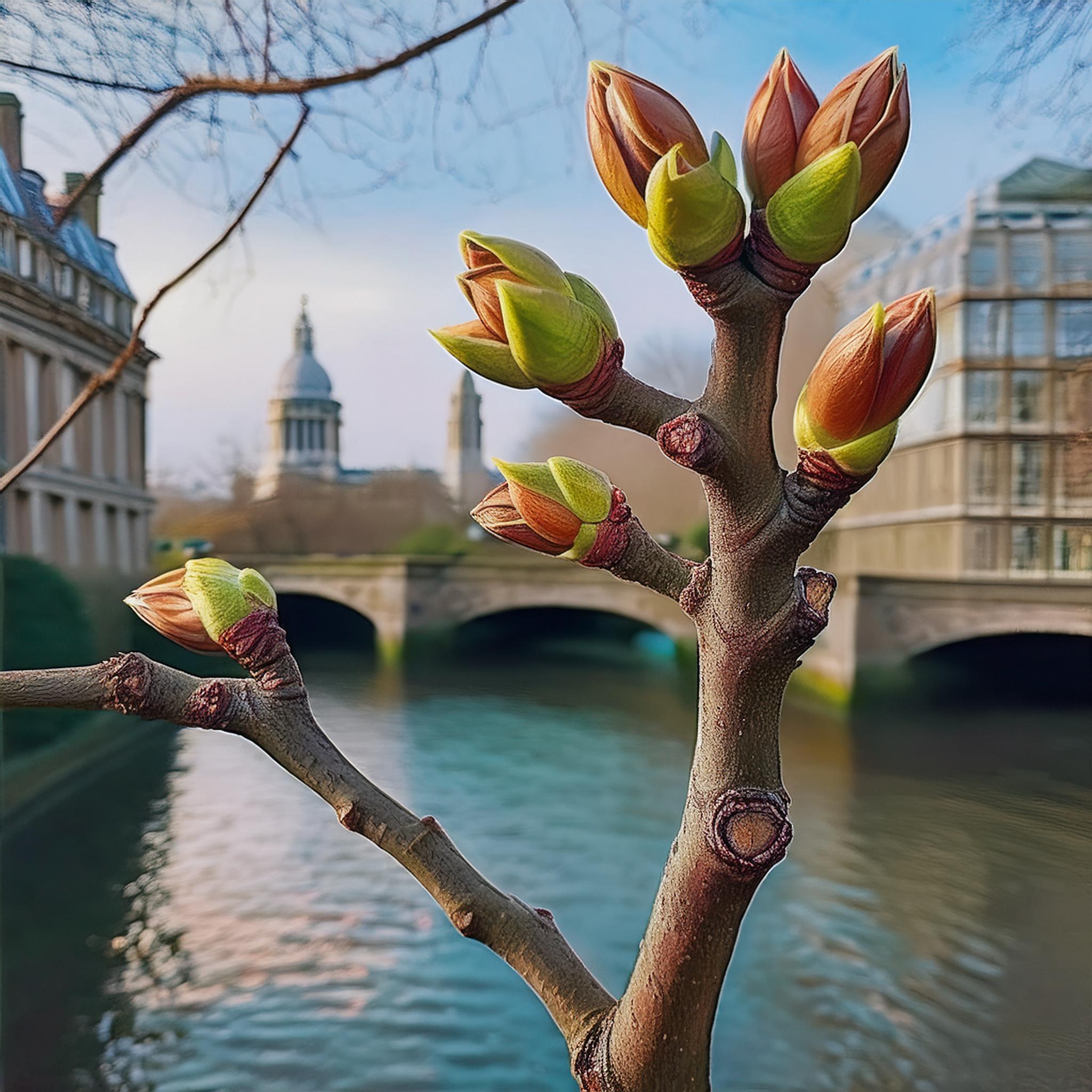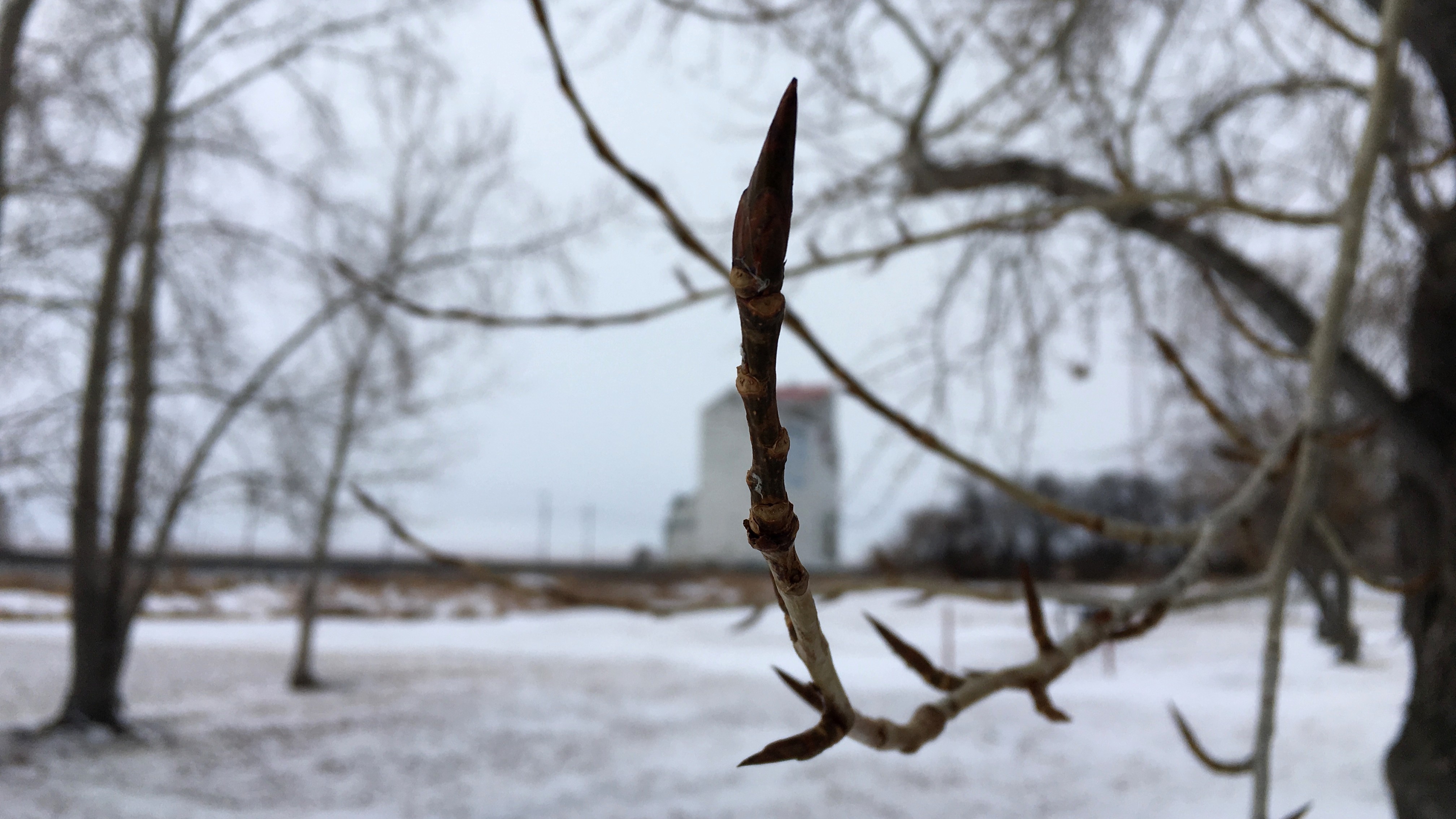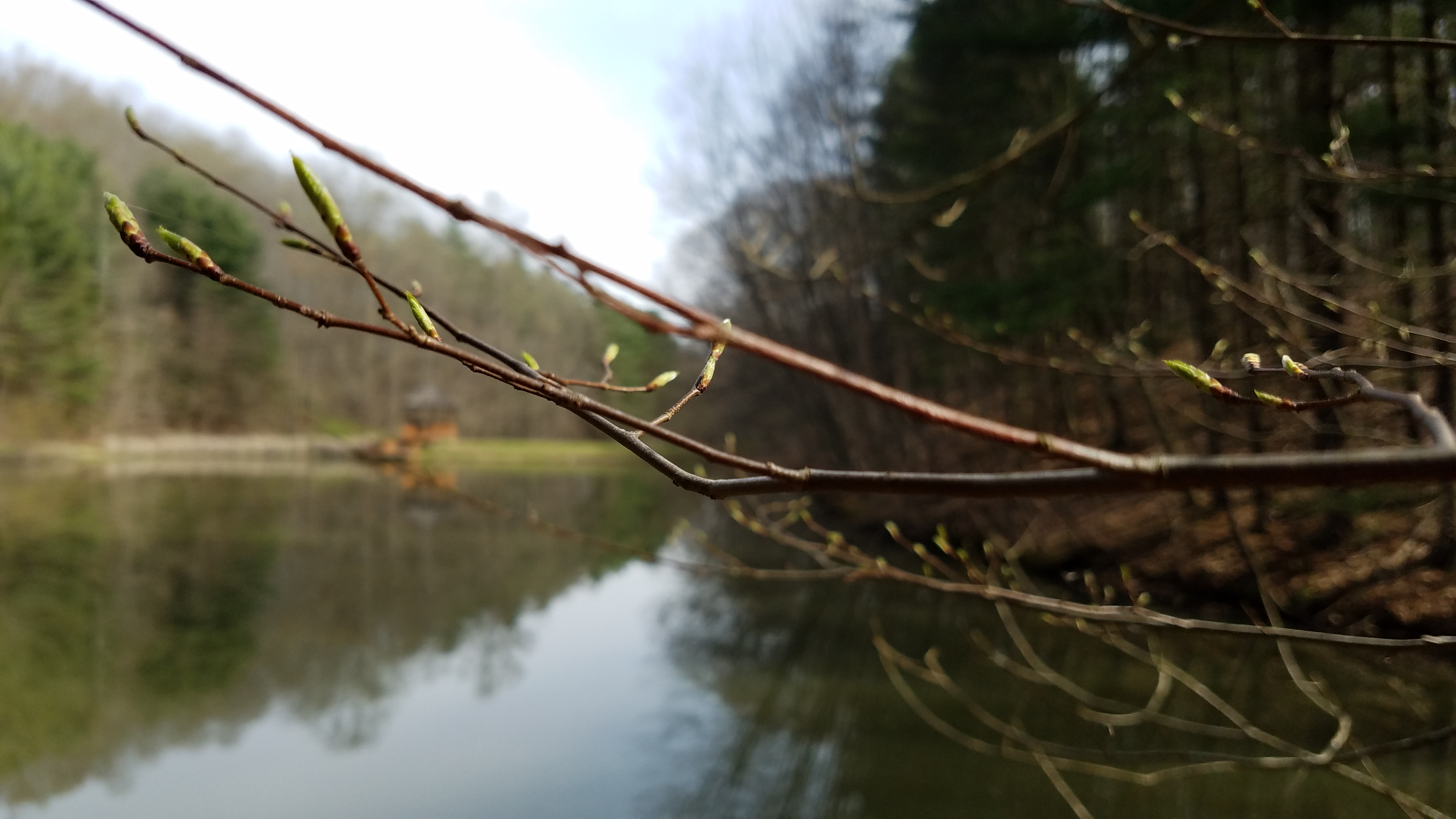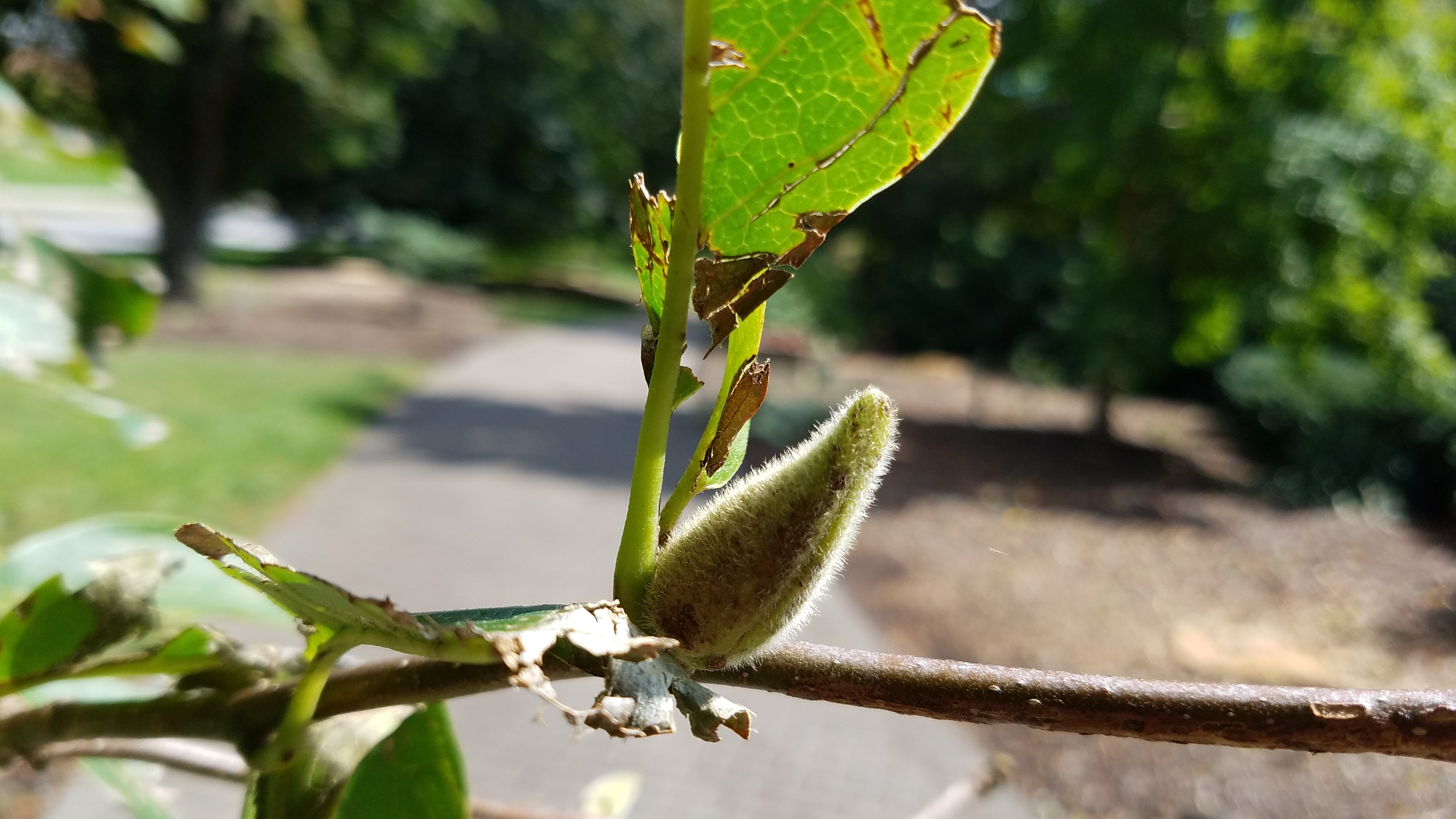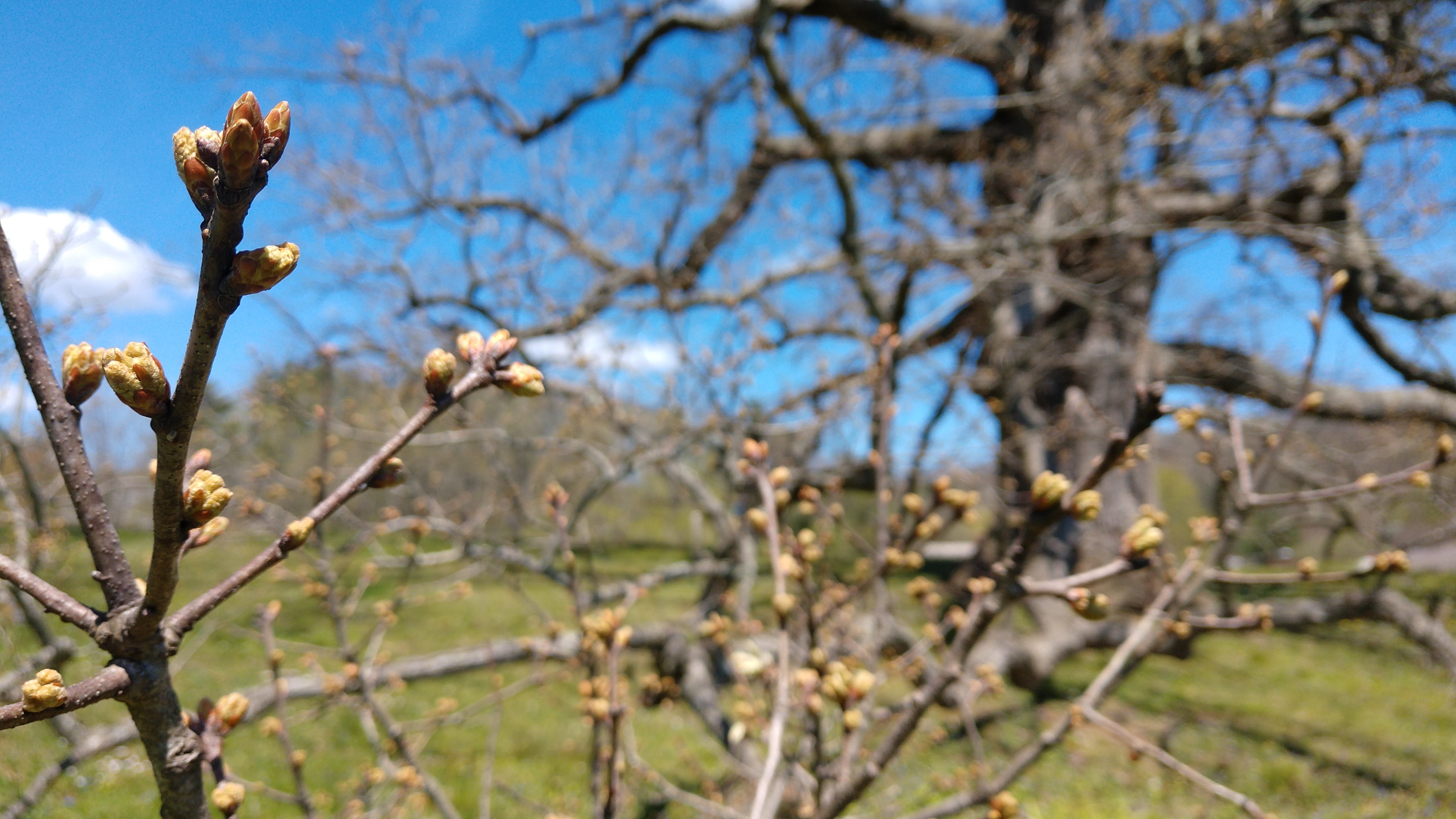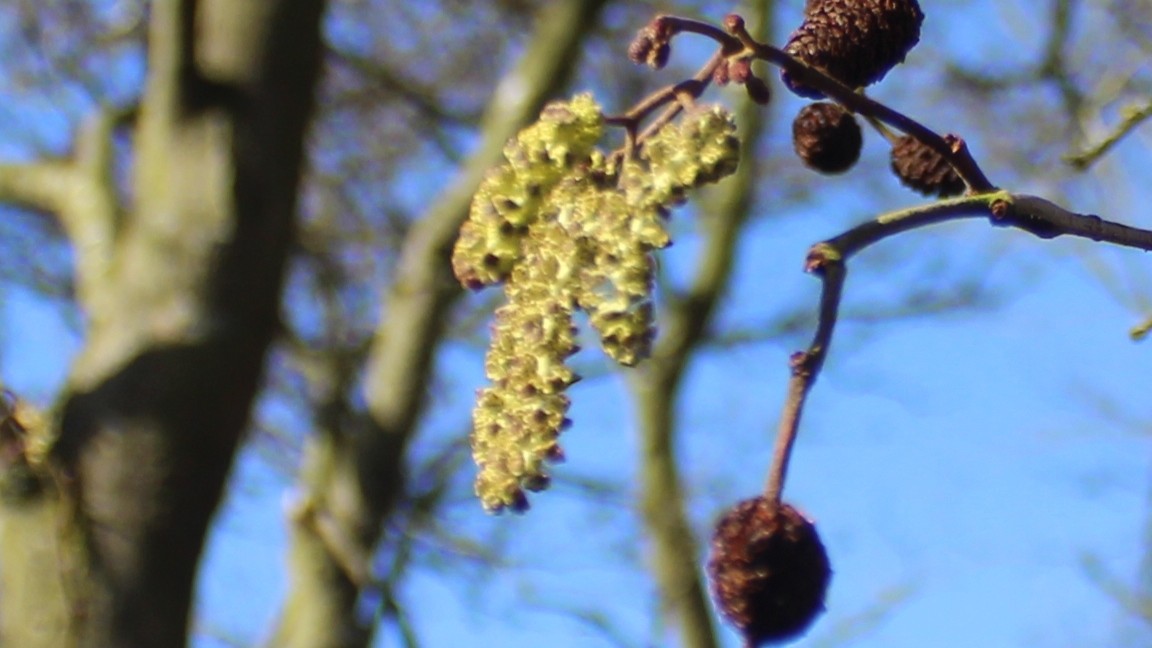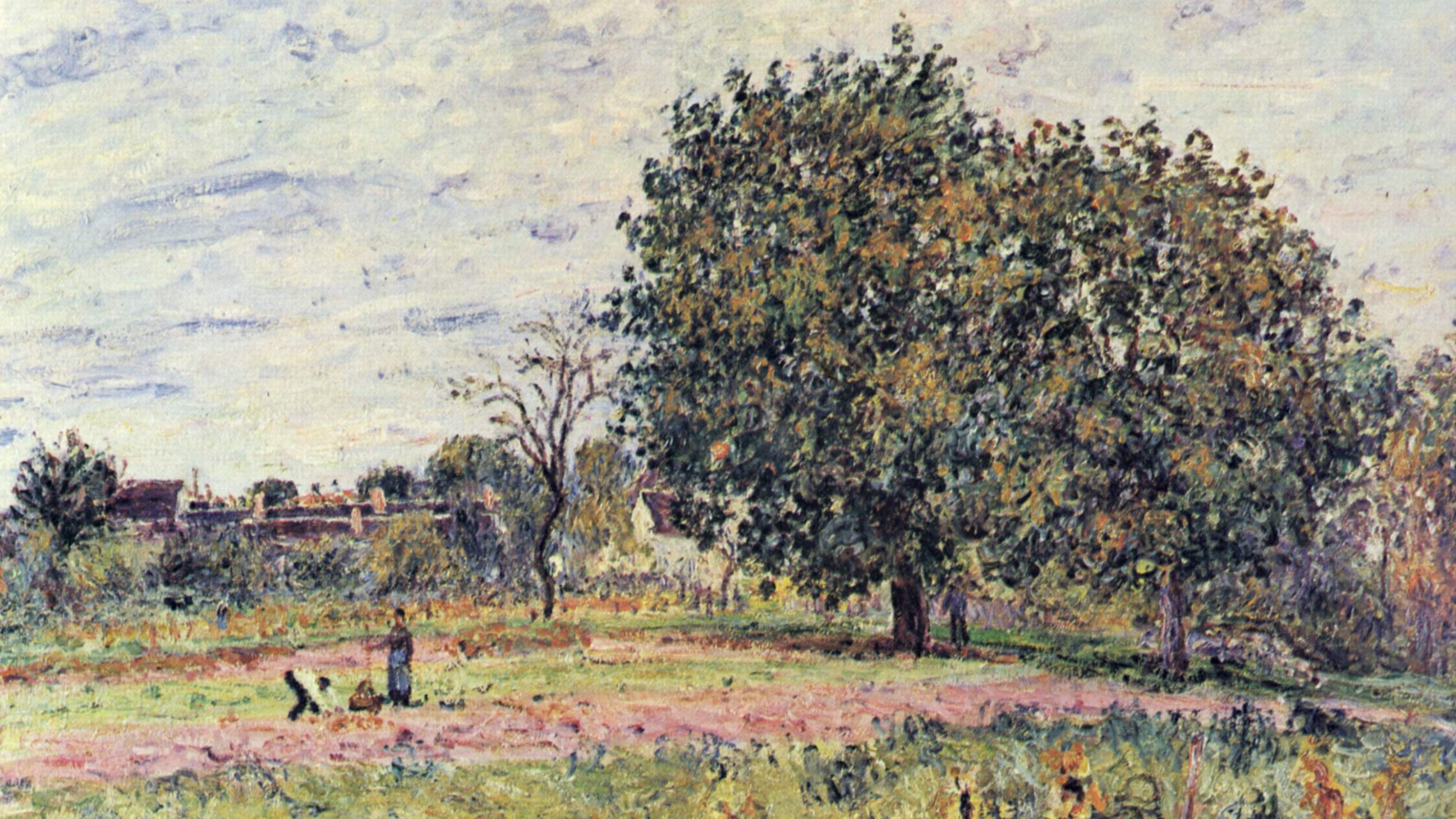The buds of poplars are often large and pointed. In balsam poplars they are both sticky and smell strongly of balsam. Maples tend to have small buds but unusually set opposite each other on the stem. Elm and birch buds tend to be equally nondescript but are set alternately. Oaks are a little easier with a tendency to cluster their buds at the end of branches.
Spindle trees Euonymus spp. have green bud scales with brown edges and guelder rose Viburnum opulus similarly green buds, but with purple edges.
